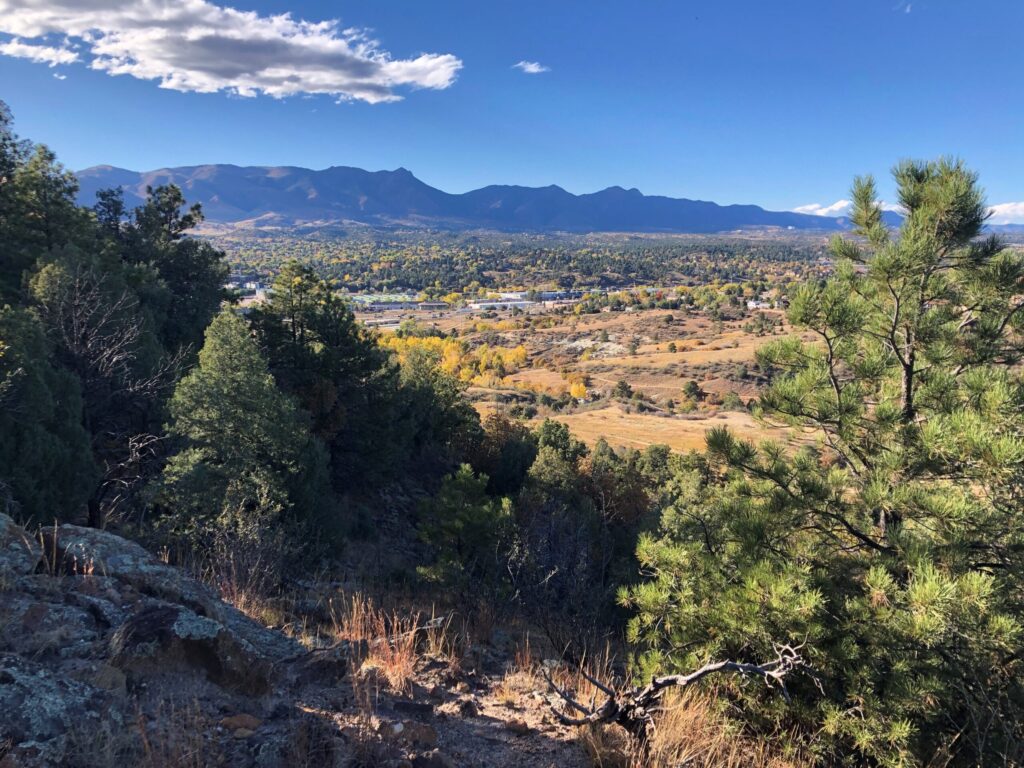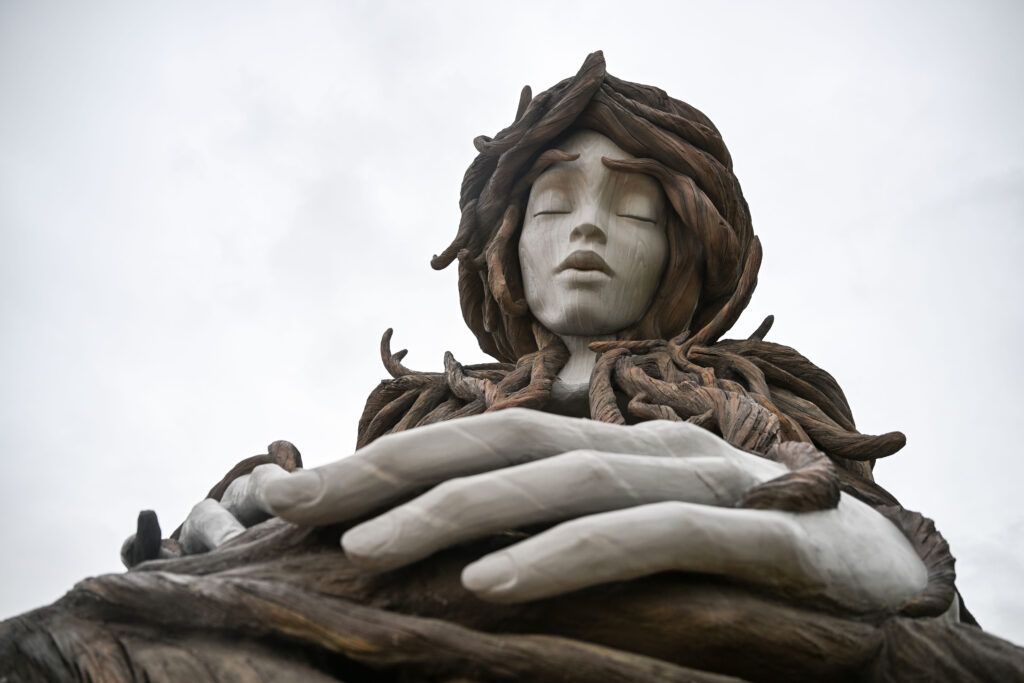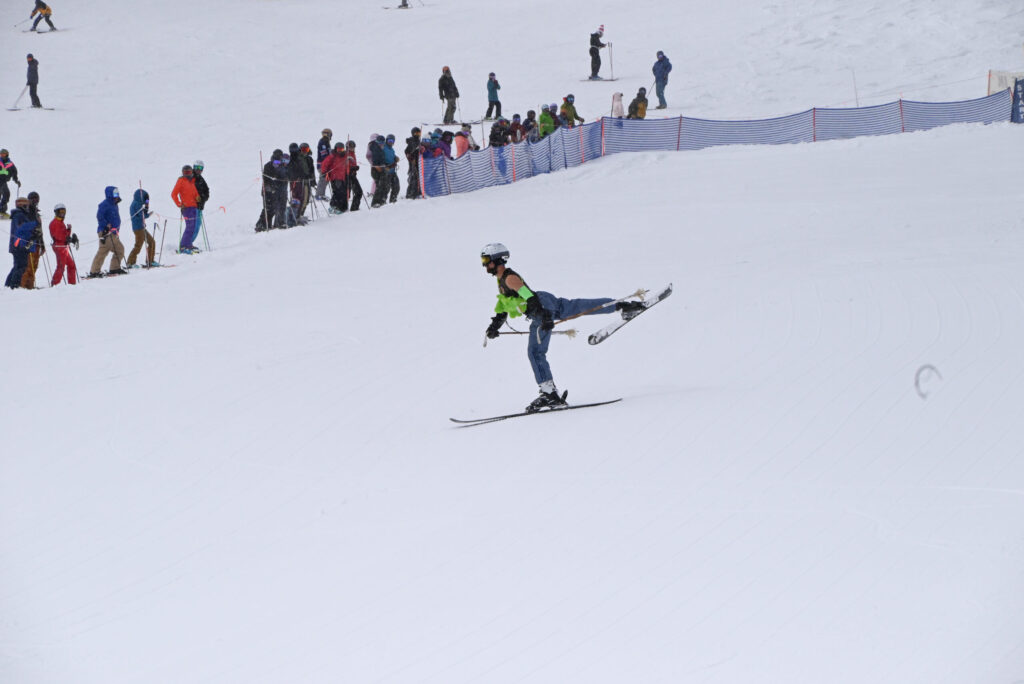Frozen phenoms: The marvelous ice caves of western Colorado

Christian Murdock, The Gazette
It’s not a drive that people soon forget, that drive from the little western Colorado town of Rifle to the place where the landscape suddenly, drastically alters. From the turn at the bowling alley to the place where the road turns to dirt, it’s only about 14 miles.
“I remember the first time I drove through that canyon,” says Tom Whitmore, Rifle resident since 1984. “It was like, What in the world? This is unbelievable!”
Even more unbelievable in winter, when Rifle Mountain Park transforms into something that wasn’t so widely known when Whitmore first visited. Now there are blogs scattered across the World Wide Web.
“Indescribable,” one writes of the ice caves.
“Magical,” reports another.
“A fantasy land,” reads another.

Marco Miglionico, from Atlanta, takes a photograph while exploring the Ice Caves in the Rifle Mountain Park outside Rifle Jan. 23. “It’s just a rare thing, and easily accessible,” says Tom Whitmore, Rifle’s parks and recreation director who oversees the mountain park.
Another calls this “winter’s best kept secret,” which is not true.
Just ask Whitmore, Rifle’s parks and recreation director who oversees the mountain park. People are flocking to the ice caves like never before, he says. He gets it.
“It’s just a rare thing, and easily accessible,” he says. “I took my kids up there a lot. It was the first chance they had to see something like that.”
The chance is slipping away with the changing of the seasons. Typically early next month, they’re gone — those frozen, bluish curtains draping limestone overhangs, creating caverns that feel out of this world, adorned with towering columns and icicles.
Winter is a great time to visit Rifle Mountain Park and the top attraction for visitors are the seasonal ice caves that form every winter. These beautiful caves can be found in the Koper Trail area of the park. The caves begin to form in late fall and usually can be explored until early spring. Video by Visit Rifle
A trail visits four of these glossy realms, which go by the names of Ice Palace, Soul on Ice, Stone Tree and Final Curtain. One walks or crawls into the realms, which are silent but perhaps for water dripping and trickling.
It’s water to thank for the creation, water that runs over these canyon walls and freezes en route to the creek. Cycles of freezing and thawing contribute to a scene that is ever evolving, much to the delight of locals. They find something different every time.
They find something oddly tropical-looking. “This beautiful green growing in the creek bottom, right next to ice and snow,” Whitmore says. “That’s quite a phenomenon here.”
In her book recounting a long life in the area, ”Rifle Vignettes,” Betty Clifford paints the picture of that watercress growing deep in winter. “Have you seen it this winter?” she writes of Rifle Mountain Park, as if imploring one to go now. “Every time I go up the creek, I am overwhelmed by its beauty …”
Going up the creek, Clifford writes, is a tradition as old as Rifle. Where tribes hunted and fished and gathered berries, homesteaders sprouted around the canyon, settling where they marveled at the steep, narrow walls crowned by evergreens.

Visitors explore the ice caves in the Rifle Mountain Park outside Rifle, Jan. 23.
The federal government went on to roll out a program that gave municipalities opportunities to buy land. The arrangement that afforded the city of Denver the likes of what is now Red Rocks Amphitheatre and Winter Park Resort similarly afforded the city of Rifle the property that is now Rifle Mountain Park.
The Civilian Conservation Corps was tasked with developing parts of the park. A lasting achievement is the Community House, which today is reserved for private events and gatherings.
Once, Clifford writes, the community gathered for Fourth of July celebrations, which featured ice cream made with ice from the caves. The days of that ice still being around for the holiday are long gone, she writes.
Starting in the 1990s, the masses of sport climbers represented another change. “Increased use has forced a fee to maintain the ambience,” Clifford writes, “although old-timers fear that too is long gone.”

The morning sun illuminates the frozen falls in the Rifle Mountain Park outside Rifle Jan. 23.
But the ice caves remain, at least for a certain time of year.
“Shocked” is how Whitmore describes people who witness the scene.
“And if they’re lucky, they go when there’s not many people around,” he says. “And they say, ‘Wow, what a hidden gem, we need to promote this more!’ And other people say, ‘No, don’t!’”
/** slide box */
#slidepanel {
border-top: 3px solid #ff0000;
}




















